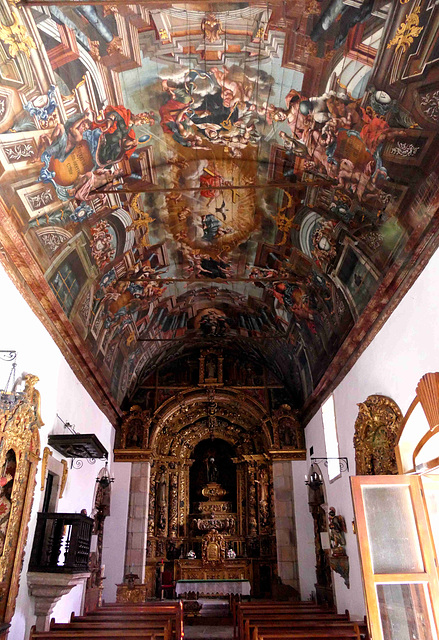Bragança - São Vicente
Bragança - São Vicente
Bragança - São Vicente
Bragança - Praça do Principal
Bragança - Sé Velha de Bragança
Bragança - Sé Velha de Bragança
Bragança - Sé Velha de Bragança
Bragança - Sé Velha de Bragança
Amarante - Ponte de São Gonçalo
Amarante - Igreja e Convento de São Gonçalo
Amarante - Igreja e Convento de São Gonçalo
Amarante - Museu Municipal Amadeo de Souza-Cardoso
Amarante - Museu Municipal Amadeo de Souza-Cardoso
Amarante - Museu Municipal Amadeo de Souza-Cardoso
Amarante - Museu Municipal Amadeo de Souza-Cardoso
Amarante - Museu Municipal Amadeo de Souza-Cardoso
Amarante - Museu Municipal Amadeo de Souza-Cardoso
Amarante - Museu Municipal Amadeo de Souza-Cardoso
Amarante - Museu Municipal Amadeo de Souza-Cardoso
Mancelos - Igreja de São Martinho
Mancelos - Igreja de São Martinho
Real - Igreja do Salvador de Real
Travanca - São Salvador
Bragança
Bragança - Castelo de Bragança
Bragança - Castelo de Bragança
Bragança - Domus Municipalis
Bragança - Domus Municipalis
Bragança - Igreja de Santa Maria
Bragança - Igreja de Santa Maria
Bragança - Igreja de Santa Maria
Douro
Lamego - Castelo de Lamego
Lamego - Sé de Lamego
Lamego - Sé de Lamego
Ourense - Santa Eufemia
Lamego - Lavandaria
Lamego - Capela de São Pedro de Balsemão
Lamego - Capela de São Pedro de Balsemão
Lamego - Capela de São Pedro de Balsemão
Igreja do Salvador de Freixo de Baixo
Lamego - Capela de São Pedro de Balsemão
Lamego - Capela de São Pedro de Balsemão
Lamego - Capela de São Pedro de Balsemão
Lamego - Capela de São Pedro de Balsemão
Location
Keywords
Authorizations, license
-
Visible by: Everyone -
All rights reserved
-
16 visits
Bragança - San Bento


In Roman times, the region belonged to the province of Gallaecia and was under the administration of Asturica Augusta (now Astorga).
The Romans were followed by the Visigoths and Suebi, who incorporated this region into their empire and introduced wheat cultivation. The first documentary mention of the settlement that developed into today's Bragança was found in the records of the Council of Lugo in 569. Under the administration of King Wamba, the town was recorded as Bregancia in 666.
From 711, the Visigoths were expelled by the Moors. The area was probably sparsely populated when the Reconquista emerged and pushed the Moors southwards. Due to its location on strategic transport routes, Bragança became increasingly important, especially after Portugal gained independence in 1139. King D. Sancho I rebuilt the badly damaged town, refortified it and granted it city rights in 1187. In 1199, D. Sancho I freed the town from the siege by Alfonso IX and established the current Portuguese place name.
In the course of the revolution of 1383 and the attempt by the hereditary Castile to take over Portugal, Bragança fell to its neighbour. It has been Portuguese again since 1401
This church is integrated in a convent founded in 1590 by order of D. Maria Teixeira. The ceiling of the vaulted nave stands out, with paintings by Manuel Caetano Fortuna.
The Romans were followed by the Visigoths and Suebi, who incorporated this region into their empire and introduced wheat cultivation. The first documentary mention of the settlement that developed into today's Bragança was found in the records of the Council of Lugo in 569. Under the administration of King Wamba, the town was recorded as Bregancia in 666.
From 711, the Visigoths were expelled by the Moors. The area was probably sparsely populated when the Reconquista emerged and pushed the Moors southwards. Due to its location on strategic transport routes, Bragança became increasingly important, especially after Portugal gained independence in 1139. King D. Sancho I rebuilt the badly damaged town, refortified it and granted it city rights in 1187. In 1199, D. Sancho I freed the town from the siege by Alfonso IX and established the current Portuguese place name.
In the course of the revolution of 1383 and the attempt by the hereditary Castile to take over Portugal, Bragança fell to its neighbour. It has been Portuguese again since 1401
This church is integrated in a convent founded in 1590 by order of D. Maria Teixeira. The ceiling of the vaulted nave stands out, with paintings by Manuel Caetano Fortuna.
Marco F. Delminho, Annemarie have particularly liked this photo
- Keyboard shortcuts:
Jump to top
RSS feed- Latest comments - Subscribe to the comment feeds of this photo
- ipernity © 2007-2024
- Help & Contact
|
Club news
|
About ipernity
|
History |
ipernity Club & Prices |
Guide of good conduct
Donate | Group guidelines | Privacy policy | Terms of use | Statutes | In memoria -
Facebook
Twitter

Sign-in to write a comment.